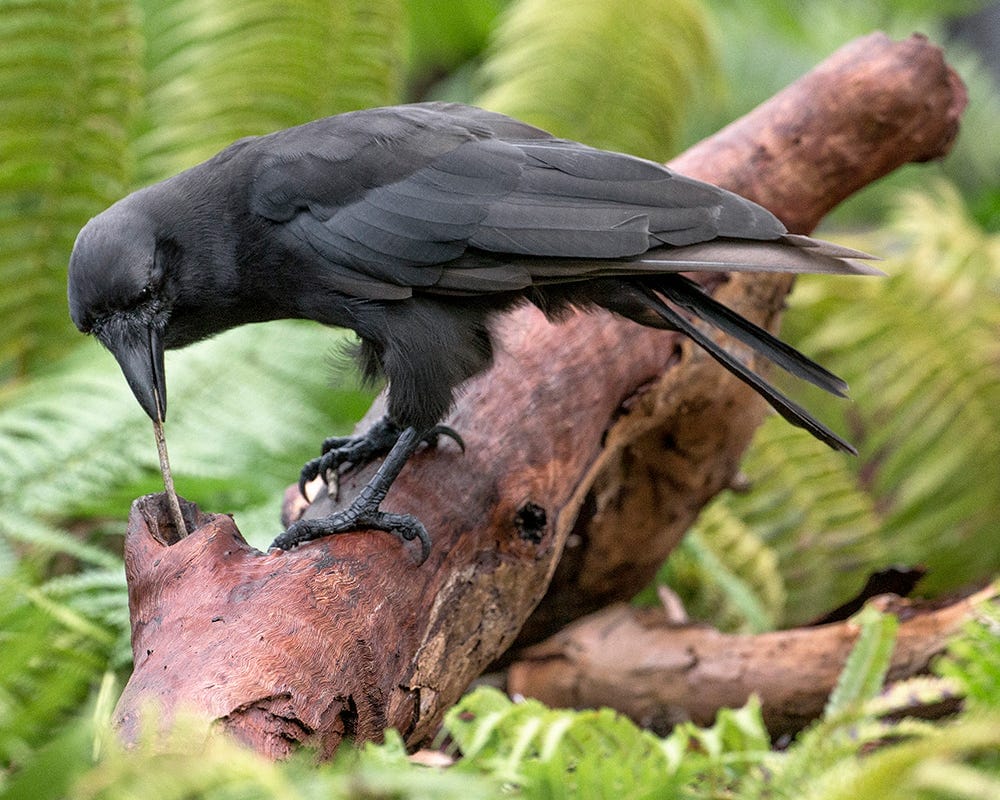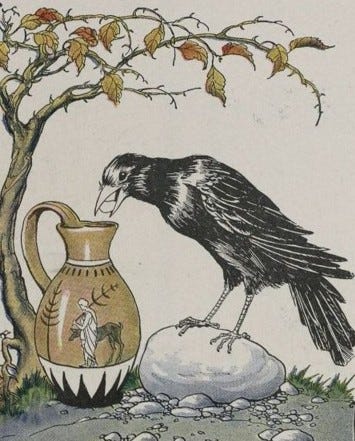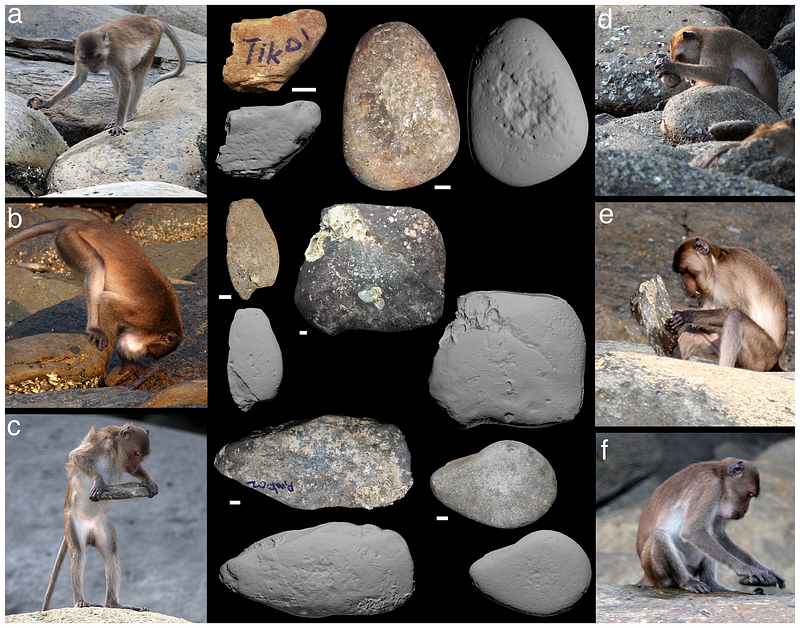
The finale for Season 5 has a bit broader focus than many of the other foraging and diet stories we’ve had so far. The majority of these stories deal with a single species or a group of closely related species (the story on dirt eating being the main exception). However, this week’s story is about a more general type of behavior, not confined to a species or group. It is also one of the most important feeding strategies in existence, because its use indicates a high level of intelligence in those individuals that practice it. This strategy involves the use of tools as an aid in capturing or extricating food, a type of behavior that at one point, long ago, was considered exclusive to humans.
Tool use for purposes of foraging can be seen in some birds, especially the corvids (members of the Family Corvidae). This group includes jays, magpies, ravens, and crows, among others and is well known for their high intelligence, especially when compared to other bird groups. Many corvid species are also highly social. The above picture is of a Hawaiian crow, Corvus hawaiiensis, also called an ‘alalā in the native tongue of its home. This particular species is considered Extinct in the Wild (see my story in Season 3 for more on the concept) and recent studies of captive birds have shown them to be quite adept at the selection and development of stick probes to extract food from holes in logs. This is useful as half of their diet consists of terrestrial invertebrates found on trunks, branches, and foliage.
New Caledonian crows, Corvus moneduloides, from the South Pacific island of New Caledonia, have been studied in the wild and captivity for years. Not only will they use small twigs as tools to retrieve food, they will often fashion the twigs for the task at hand, shortening or trimming them when necessary. This means that this species is not just capable of tool use, but also of tool manufacture. Tool use has also been seen in a variety of captive and urban corvids such as American crows, Corvus brachyrhynchos, and green jays, Cyanocorax luxuosus. Crow ingenuity and their propensity for using objects in the environment have been known and observed for hundreds or thousands of years, passed down through oral traditions. For example, New Caledonian crows and several other species are able to accurately replicate the intelligence and actions described in Aesop’s Fable ‘The Crow and the Pitcher’:
A thirsty crow came across a pitcher, but the water level was low and it could not reach with its beak. Knocking over the pitcher would spill away all the water, so the crow gathered up small pebbles and placed them in the pitcher until the water level rose to the point where the crow could reach it and drink.

Primates are among the most studied group of tool users, in large part due to their close genetic relationship to humans and because many are kept in captivity, making direct study easier. However, there are always some limitations with captive observation, especially regarding aspects of an animal’s natural environment or diet that are either difficult or impossible to replicate. Some examples of primate tool use for foraging purposes include chimpanzees, Pan troglodytes, fashioning hunting spears out of sticks and bonobos, Pan paniscus, using twigs to fish for termites in their mounds.
Pictured below are crab-eating macaques, Macaca fascicularis. Despite the name, they are opportunistic omnivores with a majority of their diet made up of fruits and seeds. The name is likely based on the overall visual prominence of their crab-hunting behavior rather than its contribution to their overall total diet. Part of that diet includes both nuts and bivalves that the macaques break open with stone tools. Size, shape, and methodology all seem to differ based on the food item and the preferences of each individual. Similar behavior can also be seen in sea otters, Enhydra lutris, which carry a stone in a pouch that they use to break open shellfish and clams.


The initial research that I put into this particular story, as well as the difficultly in finding a good picture of a bird using a twig, caused me to postpone when I had originally planned to include this particular story. Tool use, as mentioned above, is an important indicator of intelligence in animals, but it’s not the only one (and we mainly focused on only one aspect of tool use this time, i.e. tools used in a foraging and diet context). I decided that this story would make a good capstone for the season, as well as give a bit of a teaser for Season 6, as it inspired my idea for the next topic I would like to cover.
I would again like to thank Margaret Ward for proposing this season’s topic. I know from speaking with her that she has learned some fascinating tidbits throughout. I hope the rest of you feel the same way. I know I do, and it is one of the reasons why I continue to bring this short weekly stories to you. I enjoy sharing the natural world with people, especially when I get to learn new things too. As always, please let me know what you enjoyed about this Season as a whole and what you think could still use some improvement. While I already have something in mind for next season’s theme, as I just mentioned, I am still always interested in what you all would like to read about as well.